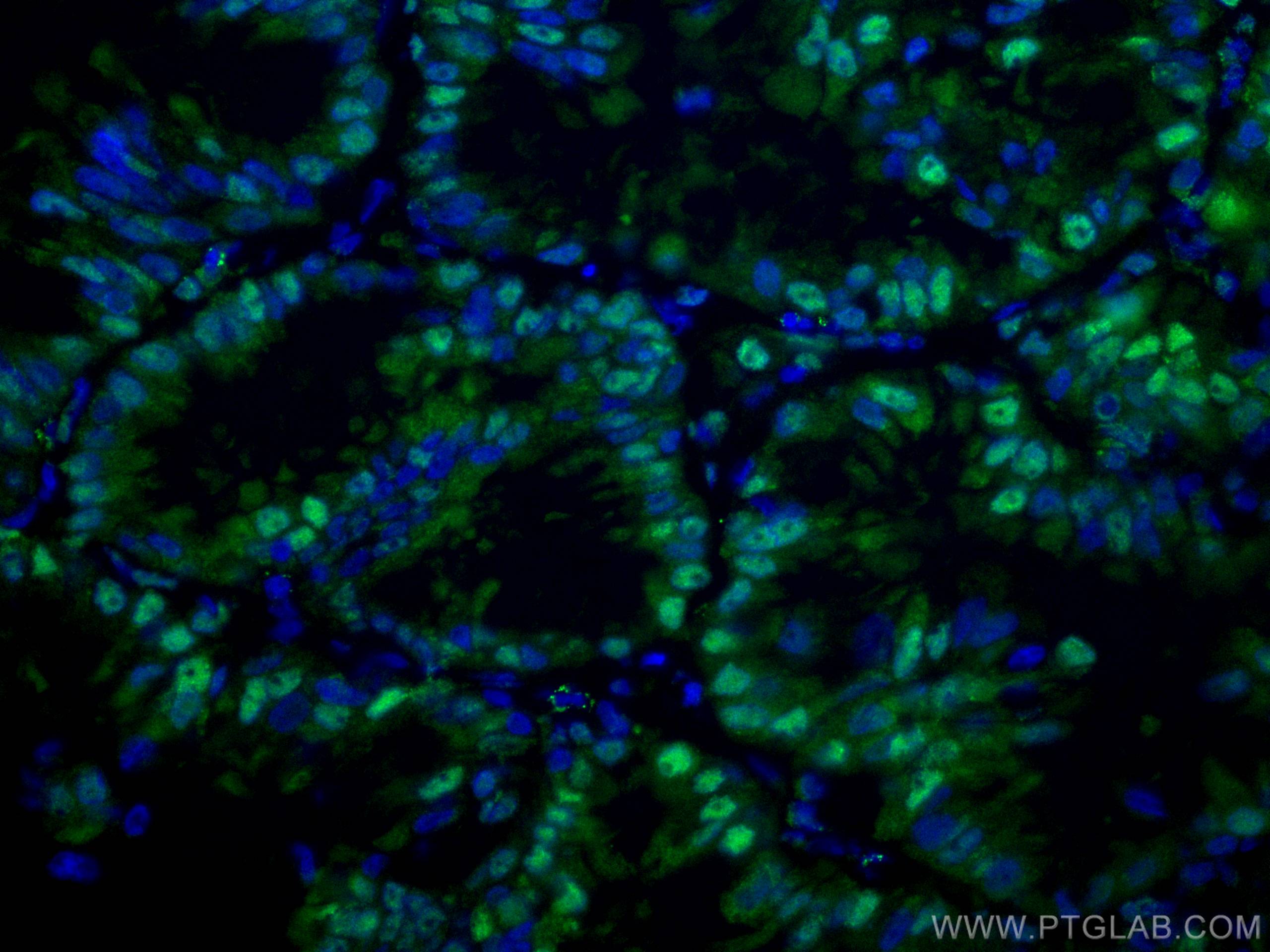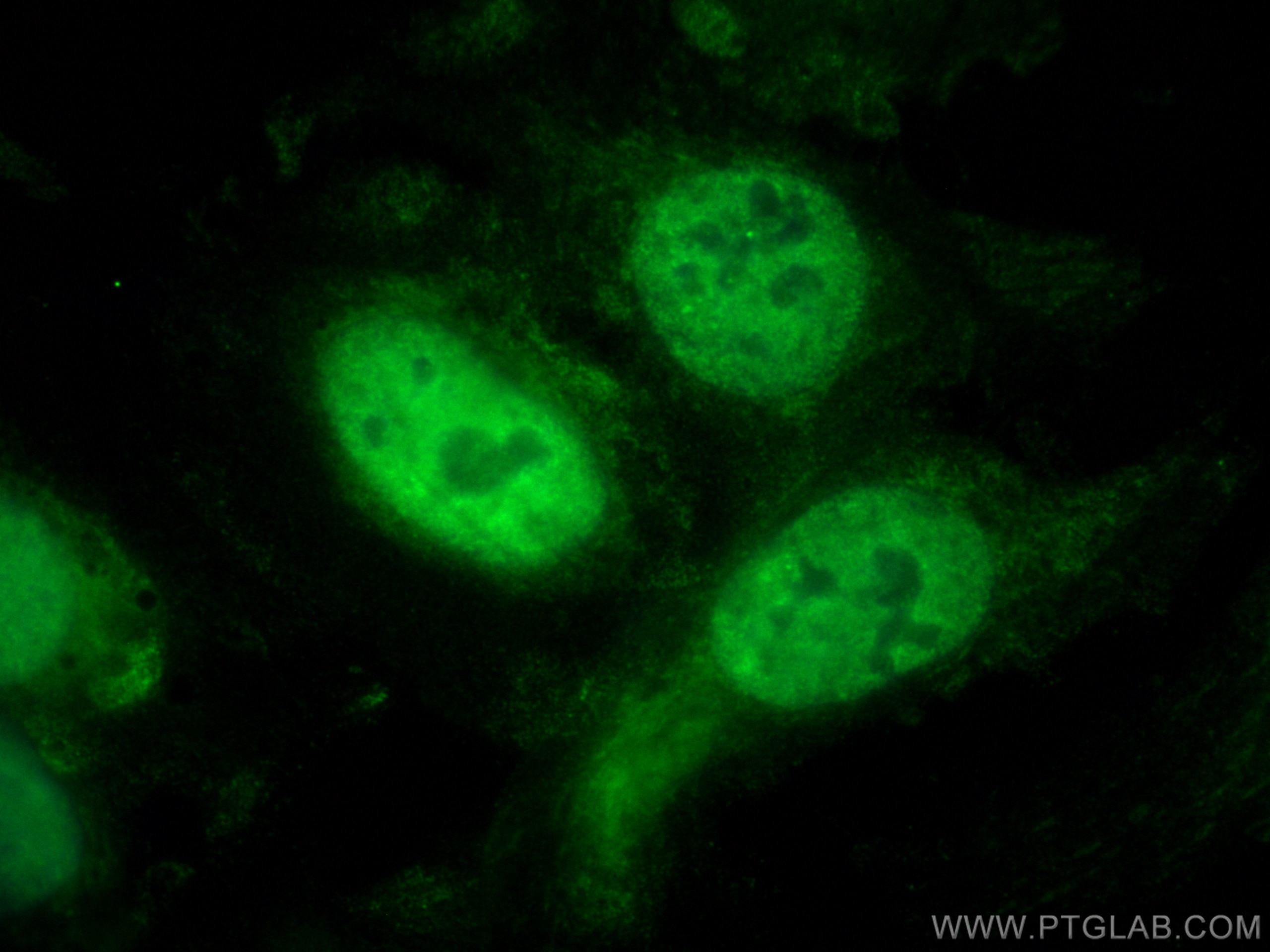PSMA6 Monoklonaler Antikörper
PSMA6 Monoklonal Antikörper für IF/ICC, IF-P
Wirt / Isotyp
Maus / IgG2b
Getestete Reaktivität
human, Maus, Ratte
Anwendung
IF/ICC, IF-P
Konjugation
CoraLite® Plus 488 Fluorescent Dye
CloneNo.
1D4B2
Kat-Nr. : CL488-67695
Synonyme
Geprüfte Anwendungen
| Erfolgreiche Detektion in IF-P | humanes Lungenkarzinomgewebe |
| Erfolgreiche Detektion in IF/ICC | U2OS-Zellen |
Empfohlene Verdünnung
| Anwendung | Verdünnung |
|---|---|
| Immunfluoreszenz (IF)-P | IF-P : 1:50-1:500 |
| Immunfluoreszenz (IF)/ICC | IF/ICC : 1:50-1:500 |
| It is recommended that this reagent should be titrated in each testing system to obtain optimal results. | |
| Sample-dependent, check data in validation data gallery | |
Produktinformation
CL488-67695 bindet in IF/ICC, IF-P PSMA6 und zeigt Reaktivität mit human, Maus, Ratten
| Getestete Reaktivität | human, Maus, Ratte |
| Wirt / Isotyp | Maus / IgG2b |
| Klonalität | Monoklonal |
| Typ | Antikörper |
| Immunogen | PSMA6 fusion protein Ag21761 |
| Vollständiger Name | proteasome (prosome, macropain) subunit, alpha type, 6 |
| Berechnetes Molekulargewicht | 246 aa, 27 kDa |
| Beobachtetes Molekulargewicht | 30 kDa |
| GenBank-Zugangsnummer | BC023659 |
| Gene symbol | PSMA6 |
| Gene ID (NCBI) | 5687 |
| Konjugation | CoraLite® Plus 488 Fluorescent Dye |
| Excitation/Emission maxima wavelengths | 493 nm / 522 nm |
| Form | Liquid |
| Reinigungsmethode | Protein-A-Reinigung |
| Lagerungspuffer | PBS with 50% glycerol, 0.05% Proclin300, 0.5% BSA |
| Lagerungsbedingungen | Bei -20°C lagern. Vor Licht schützen. Nach dem Versand ein Jahr stabil. Aliquotieren ist bei -20oC Lagerung nicht notwendig. 20ul Größen enthalten 0,1% BSA. |
Hintergrundinformationen
PSMA6(Proteasome subunit alpha type-6) is also named as PROS27 and belongs to the peptidase T1A family.The proteasome is a multicatalytic proteinase complex which is characterized by its ability to cleave peptides with Arg, Phe, Tyr, Leu, and Glu adjacent to the leaving group at neutral or slightly basic pH.It also has an ATP-dependent proteolytic activity.
Protokolle
| PRODUKTSPEZIFISCHE PROTOKOLLE | |
|---|---|
| IF protocol for CL Plus 488 PSMA6 antibody CL488-67695 | Protokoll herunterladen |
| STANDARD-PROTOKOLLE | |
|---|---|
| Klicken Sie hier, um unsere Standardprotokolle anzuzeigen |



